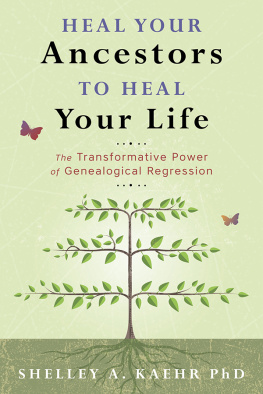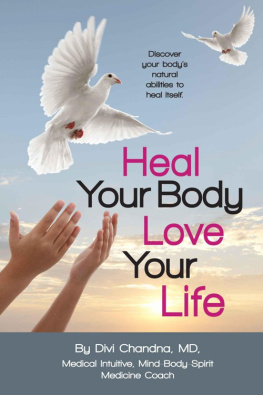
Calling My Spirit Back
Copyright 2020 by Elaine Alec
Cover Art by Evelyn White
Initial editing by Delaine Margaret
All rights reserved. No part of this publication may be reproduced, distributed, or transmitted in any form or by any means, including photocopying, recording, or other electronic or mechanical methods, without the prior written permission of the author, except in the case of brief quotations embodied in critical reviews and certain other non-commercial uses permitted by copyright law.

Tellwell Talent
www.tellwell.ca
ISBN
978-0-2288-3069-6 (Paperback)
978-0-2288-3070-2 (eBook)
Table of Contents
Introduction
There are many forces that can damage a community and the people within it, especially those who have become marginalized by forces beyond their control. But Indigenous peoples have always carried the knowledge necessary to heal. When our people heal, our families heal, our communities heal, and our land will heal. You cannot have one without the ot hers.
The stories in this book are teachings, prophesies and protocols shared throughout the years by elders, Indigenous -l anguage speakers, medicine people and helpers. They have been the foundation of individual healing and of learning self -l ove . They teach us how to make good decisions for ourselves and for all other aspects of our lives, including our family, our community and our workp lace.
Before contact with settlers, our people were sent on the land when they were young to gather as much experience and knowledge as they could, and when they returned they would contribute what they had lea rned.
I am Syilx and Secwepemc from the Southern Interior of British Columbia. I spent most of my life in Penticton, which is my mothers territory, the Syilx Nation, also known as the Okanagan Nation. Our nation extends across the Canada -U nited States border into Washington State, and although many of my teachings come from this place, they also intertwine with Indigenous knowledge shared through ceremony from many other nations across North Ame rica.
People from all backgrounds have embraced concepts from other parts of the world that promote self -l ove , healing and well -b eing through practices of discipline and meditation, but very little has been shared outside Indigenous communities about our systems and how they take care of our health and spiritual n eeds.
Indigenous peoples continue to remember and reclaim our ancestral wisdom and our responsibilities, which ensure each living being is taught to exist in balance with all crea tion.
These stories are a way of sharing knowledge and love, of promoting healing and unity. This same knowledge and process is utilized to make important decisions, govern and plan within our communi ties.
This way of being teaches us ways to cultivate safe spaces for ourselves and others through understanding of self, love -b ased practice, patience and discipline. This philosophy is shared at the end of the book, but in order to get there you have to go through the rest. Some of it might not be easy to read, but the stories of our past, of our individual experiences, have to be exposed to the light so that we can heal collecti vely.
In order to know where were going, we have to know where weve been.
When I was twenty -n ine years old, I sat in a circle with a woman from a northern Cree nation in Alberta and she told us that before we are human beings, we are l ight.
When we are light, we see everything. We see the past and we see the future. We see how everything will happen in our lives, and we know what our purpos e is.
As light, we pick our parents before we are born. We pick them and everyone that comes into our lives. We pick our experiences and everything that happens to us. We know the path we pick will make us grow and contribute to who we are as human beings in order to live our pur pose.
Some individuals remember everything they knew as light. Most of us forget what our purpose is, and it makes our time on Earth a struggle until we find our way back to our purpose, if we eve r do.
I have struggled in this human life to understand and accept this teaching, but it has become one of the reasons I continue to move forward. I have never considered myself a survivor. I grew up as the oldest child of an alcoholic mother and I had a father who did not stay in one p lace.
I was sexually abused as a child from the ages of four to ten. Not just by one individual in my community, but by many. My mom would leave us with babysitters or have them come over so she could go out to drink. When we got older, she would have parties and people would come in and out of our house at all hours of the n ight.
At six years old, I would make a bed in my closet for myself and my little sister so we had a place to sleep where no one would bother us. We witnessed many kinds of abuse, but it was normal to me and everyone around me. We all knew what was happening, but we didnt talk abou t it.
I started smoking at ten, and I had my first drink at twelve. I ran away from home and hitchhiked across British Columbia. I became pregnant at seventeen and had my son Kyle when I was eigh teen.
My dad was a quadriplegic who passed away when I was pregnant at eighteen. My mom had a massive stroke that left her unable to speak or walk when I was nineteen. At twenty -o ne , I developed rheumatoid arthritis and fibromyalgia and could barely walk down the stairs or brush my hair. My rheumatologist told me I would be in a wheelchair by the time I was th irty.
I attempted suicide at twenty -t wo . I popped pills. I was a raging alcoholic, and I abused my partners. I ended up in the back of cop cars after getting into fistfights in the middle of the street. I lived in poverty and hoped that no one knew how bad it was. There were times I didnt think I was that bad. At least I wasnt as bad as some people I knew.
There were weeks when all I had was flour and baking powder, so I made oven bread. Sometimes I didnt have money to pay bills, so we didnt have power. I thought it was okay because no one knew how bad it was and at least we had a house to liv e in.
My trauma created chaos and lived in my spirit and body. It affected the way I did things throughout my life; it made my decisions and caused me physical and mental anguish, contributing to my alcoholism, anger and self -i nflicted pain. That was my life, and it was all I knew.
I didnt see anything beyond the moment I was in. I never believed I could have a life without the anger and chaos. I had a Grade -9 education and lived in debt and poverty. It was a long road, but I now find myself in a place I never dreamed I woul d be.
I am wrapping up my three -y ear term as the Union of British Columbia Indian Chiefs Womens Representative. I am a partner in my own company, Alderhill Planning Inc., with Chief Chris Derickson and Jessie Hemphill. We are seen as leading experts in Indigenous planning and our work takes us across Canada. We have worked with over 150 Indigenous communities across the country and advise and work with both federal and provincial governments. We have grown substantially over the past four years and, besides our three partners, we now have three full -t ime staff and four associ ates.
I am married to the most brilliant and beautiful man I have ever known. Ryan grew up in Kitimat but ended up back in Secwepemc territory in Cache Creek, B.C., where he became chief for two terms. He is a marathon runner, a hunter, a berry picker, a root digger, a fisher, a thinker and a builder. I never believed I was deserving of love and happi ness.











![Eric Pearl - The Reconnection: Heal Others, Heal Yourself [Paperback]](/uploads/posts/book/138562/thumbs/eric-pearl-the-reconnection-heal-others-heal.jpg)



